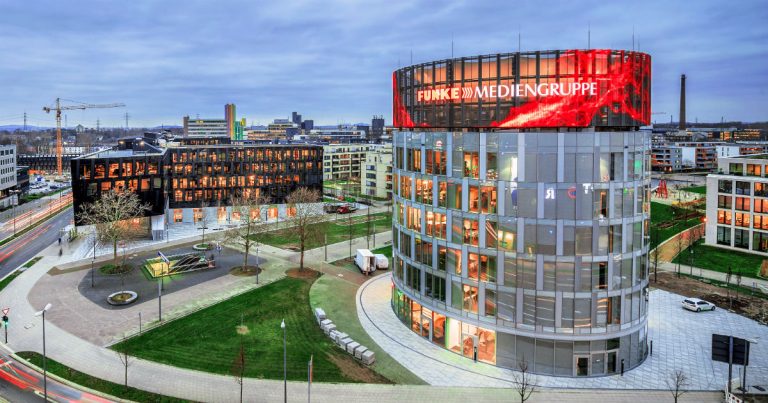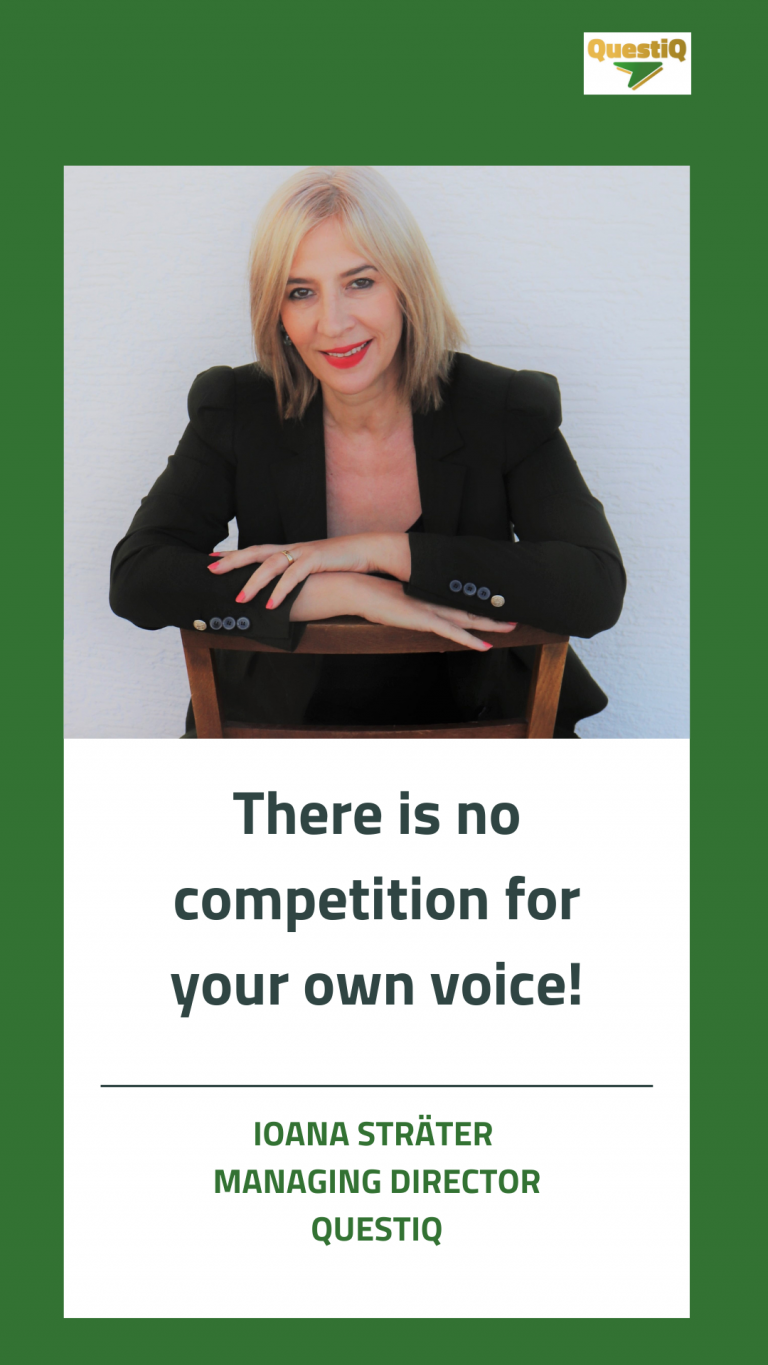‘Hybrid working’ has gone from buzzword to standard practice in record time and will soon be the norm for the vast majority of journalists in news media. It’s a change that poses its own set of challenges when it comes to attracting talent, as does the importance of ensuring diversity. We met Federica Cherubini, Head of Leadership Development at Reuters Institute for the Study of Journalism, about the results of her report “Changing Newsroom”, based on a survey of 132 senior industry leaders from 42 countries as well as a series of in-depth interviews.

Ioana Straeter – Hello Federica. Thanks for being with us today and a very warm welcome to New World encounters. Federica, you recently published a report called “Changing Newsrooms” and with a subject line like that we were always going to be keen to talk about it. Before looking at the report perhaps you could tell our readers a little about yourself and your background.
Federica Cherubini – I’m currently the head of readership development for the Reuters Institute at the University of Oxford. I work with senior leaders and managers in newsrooms to help better prepare them for the challenges that the news industry has in store for them. My expertise is in audience engagement and development. I’ve worked with well-established publishers like Condé Nast, but also for start-ups such as Harkin, which is a U.S. consultancy with a focus on audience engagement. The common theme is helping newsrooms to put the audience front and centre in the journalistic process. I’m a bit of a mix of journalistic background, but with a long interest in the broader perspective of just how culture, newsroom, and organisation come together.
Video: https://www.youtube.com/embed/liSpUeVngcQ?feature=oembed
IS – In the report you address three very important issues for publishers: one is hybrid working, the second one is diversity in the newsroom, and the third one is attracting talent. Starting with the first of these, how would you define hybrid working?
FC – By hybrid working we mean a setup where some people are working in the newsroom or the news organisation’s offices, and some of their colleagues are working remotely. The last 18 months of pandemic has seen a change from enforced remote working where lockdowns forced people to be at home, to the hybrid shift we are seeing at the moment – and that’s the case around the world. It’s important to remember the pandemic is neither over, nor being experienced in the same way globally, so hybrid working with both office and home workers is found everywhere.

IS – What are the hybrid working advantages you discovered over the course of the report’s surveys?
FC – The report is based on a survey of 132 newsroom leaders from 42 countries; that’s a broad sample of people and approaches. From the participants in the survey it became clear that hybrid and flexible working have some advantages, flexibility and efficiency being, of course, notable among them. In some cases that flexibility results in improved well-being for the employee, but it also became clear that collaboration, creativity, and communication are much more difficult to get right in a hybrid setting.Subscribe to New World Encounters Newsletter
IS – So flexibility and wellbeing are the potential advantages, but there may be downsides for creativity and efficiency?
FC – Precisely. For example, 70 percent of the people who participated in the survey said that remote working led to greater efficiency over the last year.
Interestingly 79 percent of the people in the survey said they are fully committed to the organisation they work for, fully committed to working in a hybrid setup, and 89 percent declared themselves to be even more personally fully committed. But the question is how to implement it. The majority of the people we talked to in the survey (57 percent) said they are still in the process of figuring out how to do it, and how to do it well. That is because there are a few questions with answers that are not that obvious. For example; who chooses when to be in the office? Is that the choice of the employee? Is it a choice of each team? One of the things that came out of the report is that during the pandemic remote working strengthened the broader connection across teams, and across departments, but that the feeling of the organisation’s culture was much more difficult to replicate.
IS – Did you encounter situations where it was the leaders who weren’t so happy with hybrid working?
FC – Nine percent of the people who took part in the survey said that they were thinking about returning to a pre-pandemic model. There are still some people who are not super convinced. Of course, we should remember that different types of organisations have different needs. Broadcasters, for example, radio production, and places where you need big studios or big technology, with physical hardware. For those media companies it can be much more difficult to do things remotely, while for other news media their set up can make it easier. There’s a lot of difference depending on the type of content production you’re engaged in.
IS – What about the other topic that you addressed in your report; the issue of diversity?
FC – The survey shows that there is still a lot of progress to be made when we ask newsroom leaders about diversity. The majority (79 percent) think that the organisation is doing a good job when it comes to gender diversity. But that number drops dramatically when we talk in terms of ethnic diversity, with only 38 percent saying the organisation is doing a good job. Then there’s the question of diversity for people from a less privileged background; when it comes to political diversity, only 33 percent said they feel the organisation is doing a good job.
In our survey, 79 percent said that they feel their organisation is doing a good job with diversity. But the higher we go up the newsroom hierarchy, the less they feel the organisation is doing a good job. At the senior level only thirty five percent feel the organisation is doing a good job.
IS – Another burning issue for media houses is attracting talent. We have to compete with the big tech giants who have demonstrated they really know how to attract talent. What were the findings of your interviews?
FC – The survey shows that participants felt that the pandemic made it harder to hire, and to retain talent, especially in certain areas. News departments typically feel that it’s easier with editorial talent. But when it comes to the areas of product, commercial data, insights, and technology, it’s much harder for them to hire and to retain talent. There are a lot of competitors, and rival markets with higher salaries and greater job flexibility. What is interesting is that some organisations really thought about how hybrid and flexible working can benefit both the issues of diversity and talent hiring/retention.
From a diversity perspective, for example, a big organisation with headquarters in expensive cities like London or New York, will find that flexible working really opens up possibilities. Quartz is one example we have in the report, and they transitioned to be a fully remote company, hiring people wherever they are. They report that one of the consequences is that they think about diversity and talent in a very different way.
IS – That’s a very important point because what we noticed here in Germany before the pandemic and before the surge in hybrid working, is that young people and talented digital natives typically do not want to go to work in provincial offices. That traditionally made it difficult hiring talent in regional areas as big cities always had the advantage. Hybrid work – the fact that you can work remotely and hire talent from wherever it may be found, opens a lot of new opportunities.
IS – Federica, if you were to select a few key takeaways as a recommendation for our network of media professionals, what would be that? What could publishers who struggle with these three issues do to change the status quo?
FC – When starting with hybrid and flexible working, planning is crucial. Thinking about how to strike the right balance between flexibility while taking into account the expectations of employees that have been able to work remotely for 18 months. The world has changed so much in these last 18 months and part of that is an increased expectation from employees and new employees for flexibility in work.
Organisations have to think about the generational requirements of the newsroom, demands for flexibility, and the need to be equitable with regard to all. Some approaches might be more conducive for working remotely while others that rely more heavily on collaboration might still need more office time.
That means really thinking about what a remote or hybrid meeting is going to look like. It was somehow easier when absolutely everyone was in a little on-screen box. It gets more complex when you have some people in the meeting room right next to you, and others joining online. How do you make sure that the experience is the same for both?
In the report, there are some examples of rules that the BBC has put in place, thinking about how to host inclusive meetings and especially with regard to the hybrid approach. Linked to that is the issue of proximity bias in which those who are present in front of their bosses aren’t accused of preferential treatment while remote workers are less visible and therefore lose out on opportunities. That’s a very real concern and implies carefully considered rules about talent and diversity.
With talent, for example, you used to seat a junior reporter next to a more senior reporter and have them learn the ropes from them. But that experience is not the same in a remote working scenario. How do you implement mentorship and training to encourage and reap the rewards of talent, while cultivating the sense of belonging? It’s not just about hiring diverse talent, but really creating a culture where the diversity and inclusivity is part and parcel.

IS – As well as human talent there is also always an issue of toolsets. Regarding tools and formats for a hybrid working, did you observe any trends?
FC – In each case we asked what kinds of tools are used. From Zoom to Google Meet, there are so many individual choices depending on the different organisations. I think the right choice of tool and the workflow behind it again goes back to the initial planning. For the reasons discussed above it is essential that those joining remotely feel they get a decent representation and that those present in the office are equally represented online. We found a lot of respondents had invested in bigger screens and upgraded audio in meeting rooms. All those kinds of basic tools that can empower individuals, enable better meetings, and ensure a more rewarding experience all round.
IS – Thank you so much Federica for your time, and for your insights. We are looking forward to sharing the findings of your report with our network.
FC – Thank you so much for having me.










